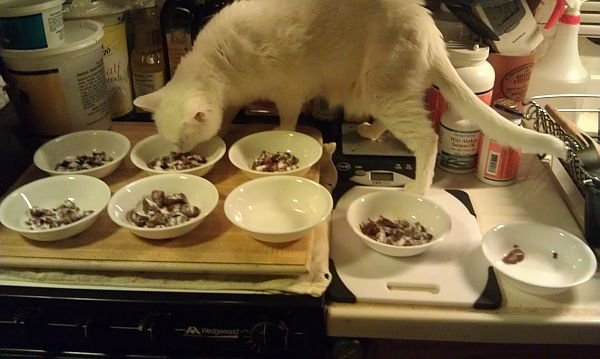Hello there. I just got interested in the raw feeding for my cat, and I just had a couple of questions.
Do you find it costly in comparison to kibble/wet foods? About how much do you think you spend on preparing food a month?
What would be the best way to keep it low-budget, without sacrificing the quality of the food? I'm willing to spend what I have to, but would like to keep it affordable (not exactly high income here).
Any advice? Tips? Thanks!
* Also, if anyone could possibly get into detail about how to get into all of this, or share a link with some useful information (I've looked at http://feline-nutrition.org/nutrition particularly), maybe with some good recipes (that really explain how to do it all), that would be highly appreciated!
Do you find it costly in comparison to kibble/wet foods? About how much do you think you spend on preparing food a month?
What would be the best way to keep it low-budget, without sacrificing the quality of the food? I'm willing to spend what I have to, but would like to keep it affordable (not exactly high income here).
Any advice? Tips? Thanks!
* Also, if anyone could possibly get into detail about how to get into all of this, or share a link with some useful information (I've looked at http://feline-nutrition.org/nutrition particularly), maybe with some good recipes (that really explain how to do it all), that would be highly appreciated!












 I'll have to work on it tomorrow - it's late for me.
I'll have to work on it tomorrow - it's late for me.







